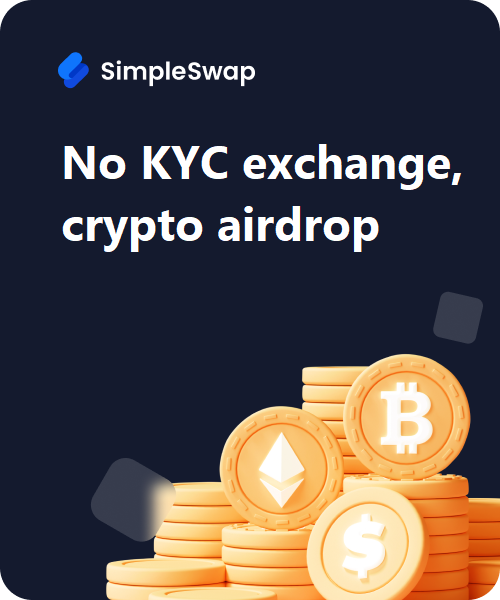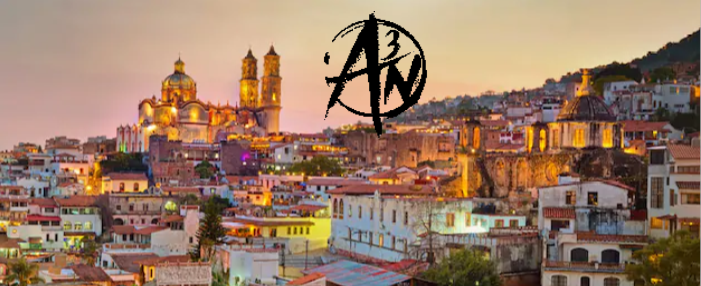
Mexican markets are the perfect agorist paradise
Agorism is all about voluntary exchange in spite of the powers that be. It’s about living free in spite of oppression; in some ways, it’s a more realistic approach than simple anarchism for many because it provides a solution. It’s more than a philosophy but a lifestyle in itself. I caught glimpses of it with my flea market adventures as a kid in the United States but the place where I’ve really seen the most agorism is south of the border, in Mexico at the markets.
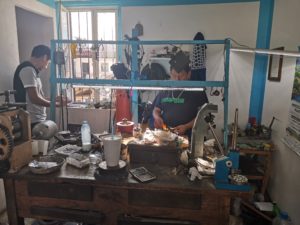 This thought occurred to me recently when I visited the silver producing capital of Mexico, known as Taxco. This used to be an old silver mining area where artisans gathered to work. The mining has long since stopped but the tradition of working silver remains in the area, making it a magical place to visit. It’s the perfect blend of craft and tourism. Perhaps the best part of Taxco, though, isn’t in its silver artisans or it’s cathedral (although they are special), it’s in the markets.
This thought occurred to me recently when I visited the silver producing capital of Mexico, known as Taxco. This used to be an old silver mining area where artisans gathered to work. The mining has long since stopped but the tradition of working silver remains in the area, making it a magical place to visit. It’s the perfect blend of craft and tourism. Perhaps the best part of Taxco, though, isn’t in its silver artisans or it’s cathedral (although they are special), it’s in the markets.
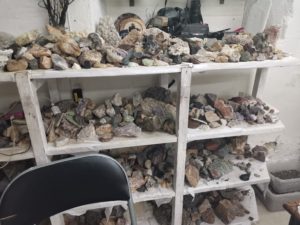 When it comes to the markets of Taxco there’s a little bit of something for every budget and need. There’s food available for extremely cheap, as well as some fancier, more expensive restaurants. There’s shopping everywhere but you’ve got options. For those who are tourists, there are well laid out stores that are pretty but also somewhat expensive. There are options for dealers, little hole in the wall places that sell silver at dirt cheap prices. Even fake silver products to be found in Taxco.
When it comes to the markets of Taxco there’s a little bit of something for every budget and need. There’s food available for extremely cheap, as well as some fancier, more expensive restaurants. There’s shopping everywhere but you’ve got options. For those who are tourists, there are well laid out stores that are pretty but also somewhat expensive. There are options for dealers, little hole in the wall places that sell silver at dirt cheap prices. Even fake silver products to be found in Taxco.
Beyond that, there is the actual market itself, basically created by market demand for a need to be cheaper and easy to access. Place where veggies are sold, as well as meats, herbs, fresh food and pretty much anything you could think of. For years, I shared the wonders of the central markets of Acapulco but having traveled to Taxco, impressive markets are just as much a part of the culture here as the Mexican hustle in general.
Mexicans, for the most part, are the ultimate agorists. They know how to use their skills to survive and they aren’t shy about it. At a typical market you’ll hear people yelling over each other advertising what they have from the signature yell of “CHILATE” in Acapulco to the “TAMALES” you’ll hear pretty much everywhere else. Many complain about vendors in Acapulco who come to sell you things, I just say no and respect the agorist hustle; people are trying to provide value for value instead of living off the government because they’re what most people would consider “poor.”
The most genuine displays of agorism come within the markets. I got to know the market in Acapulco because of a local restaurant owner who went there to provide fresh food for his restaurant every night. He found his favorite vendors and would make a daily trip to the market, spending his pesos usually at tiny family owned ventures, from a cheese shop to butchers. In my three years in Acapulco, I learned the whole market as well as made relationships with vendors that stand till this day, even though I left for about 8 months.
There’s no taxes, no regulations, just the honest exchange of value between people. Hell, even prices are negotiable in Mexico, especially if you’re planning on buying more than one of something. I can’t even count the number of times I’ve asked for a price, deemed it too expensive and walked away only to have the person chase after me dropping the price sometimes up to 75%. It sounds like a bit of a hassle but is truly fun in the moment. And really, with how some people spend their money, you can’t blame them for trying!
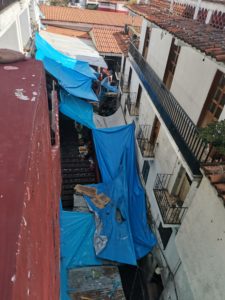
Taxco also has a truly impressive marketplace, and in some ways more impressive than Acapulco. At the very least, it’s certainly a lot more enjoyable because Taxco has a perfect climate. We were only there a short time, but the first morning we were up and in the city at nine a.m. out of excitement. Most of the stores were closed, but we were told about a market ahead and we found it. It seemed to be in a few buildings and streets in a very hilly part of town. It was full of staircases and little corridors going in every direction. I don’t remember how many levels there were, but it felt like 10 or more. It felt like a ghetto skyscraper of sorts, if you could imagine such a thing, complete with tarps over the walkways to keep things shaded, which you could see the top of as you went up and looked down.
Most Mexican markets of any impressive size seem chaotic and random the first time you go, unless you’re used to that. But if you pay attention there’s usually a sort of organic organization that makes it easy to find things. Anything you can’t find yourself can be found by asking a random person, who will point you in the right direction even if you don’t speak Spanish. One of the truly special aspects of Taxco’s market was the fact that it was easy to navigate even during our first time being there. The things we liked were easy to relocate later, despite the fact it appeared totally chaotic and crazy. For me, that’s where the beauty is.
 We found our way to the bottom, which in most markets sells some sort of pre-cooked food generally based on the area of the country. In Michoacán, you get carnitas which is salty, fatty slow cooked pork. In Guerrero, you get Barbacoa de Chivo, essentially super-slow-cooked goat meat usually served with broth and tortillas. We weren’t even in the food area for a minute before a random man thrust a paper towel with fresh hot barbacoa meat telling us to try it. It was better than any goat I’d had anywhere else, so I stopped and had the best breakfast I’ve had in Mexico. Later that day I went back to the place next door and had even better tacos somehow. Competition has that effect.
We found our way to the bottom, which in most markets sells some sort of pre-cooked food generally based on the area of the country. In Michoacán, you get carnitas which is salty, fatty slow cooked pork. In Guerrero, you get Barbacoa de Chivo, essentially super-slow-cooked goat meat usually served with broth and tortillas. We weren’t even in the food area for a minute before a random man thrust a paper towel with fresh hot barbacoa meat telling us to try it. It was better than any goat I’d had anywhere else, so I stopped and had the best breakfast I’ve had in Mexico. Later that day I went back to the place next door and had even better tacos somehow. Competition has that effect.
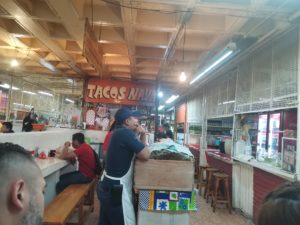 But if there’s one thing to be seen throughout Mexico, it’s people at markets producing and selling things to meet market demand. Some of the stuff may seem random but when you spend enough time going to the markets here it becomes pretty obvious it’s not all random, there’s a market for everything which has a use, even if it’s only a one time use like food products.
But if there’s one thing to be seen throughout Mexico, it’s people at markets producing and selling things to meet market demand. Some of the stuff may seem random but when you spend enough time going to the markets here it becomes pretty obvious it’s not all random, there’s a market for everything which has a use, even if it’s only a one time use like food products.
The only thing in the United States that is close to what I have experienced here is a flea market, but even those are highly regulated. Some of the best, most interesting little shops in Mexico are the ones they fit in odd spaces or the ones on the middle of the sidewalk, something illegal in most places of the United States. Mexico may have its problems, but at least the general population is still allowed to engage in the hustle and bustle of agorism.






